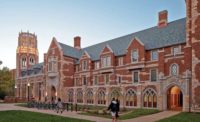"Educational facilities need to meet requirements of faculty and industries who'll hire our students," says Scott Poelker, Trident vice president of finance and administration. "And they need to be flexible. LS3P helped us work out these issues by listening to our requirements and understanding what we're trying to accomplish. Once they build consensus on design, they present alternatives for us to evaluate and determine aspects that best meet our needs."
Another advantage, Boyette adds, was LS3P's reliability with cost estimates. "You can run way over, which is bad, or run way under, which is almost as bad, because you could've bought more building," he says. "LS3P worked with local contractors to get realistic numbers early in the game that we could rely on."
Now, Boyette says, CU-ICAR is well on its way to fulfilling its mission to provide the automotive industry with top-quality technical professionals who themselves are applying the practices and benefits of collaboration.
"We started this school to develop engineers who understand how systems integrate together," he says. "The opportunity is there for the automotive industry to play an increasingly vital role in South Carolina's economy, and we want to do what we can to support it."
Penney is likewise bullish about the immediate future and LS3P's role—both in its home base of the Carolinas and nationwide. Yet it is critical that architects and engineers, like their projects, become more fully integrated in their communities, their professions and their practices.
Building information modeling offers an ideal example. "BIM changes the way we do working drawings in that it allows us to do more value-added propositions and share the benefits with each other," he says. "It's really important we develop a culture of sharing."









